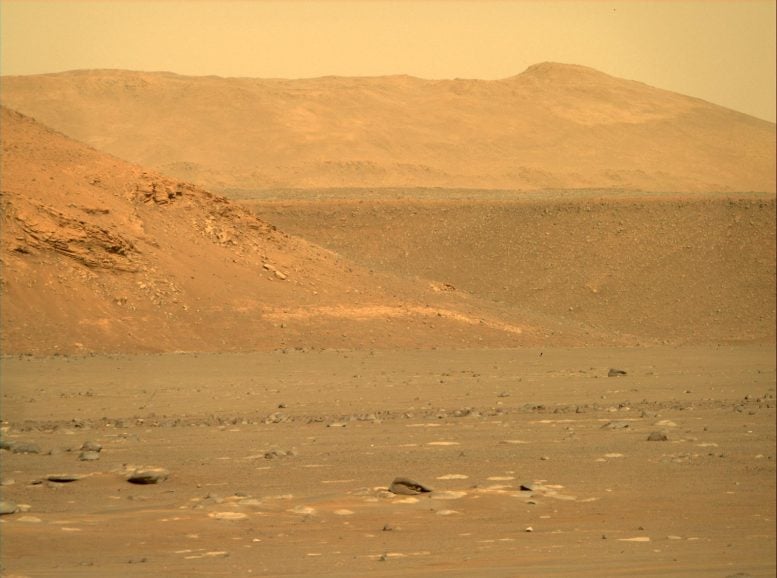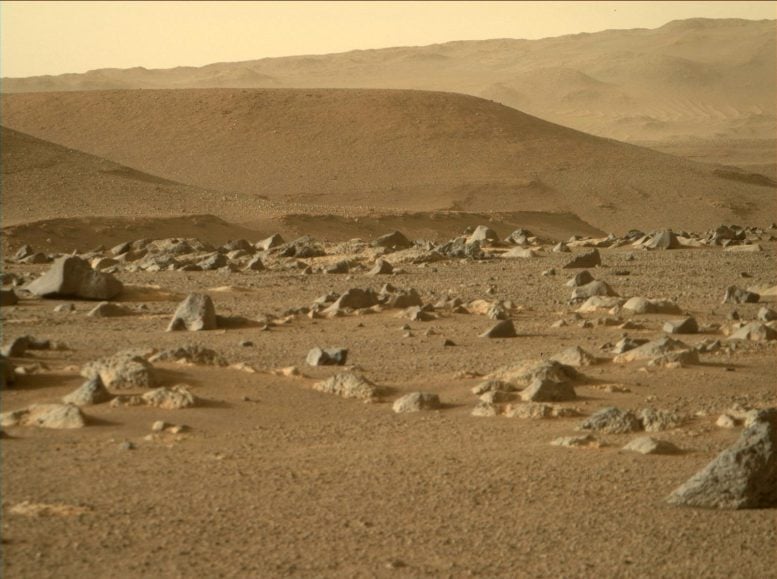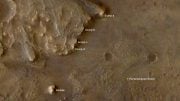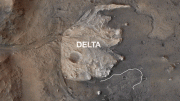
Mars Perseverance Sol 388 – Right Mastcam-Z Camera: NASA’s Mars Perseverance rover acquired this image using its Right Mastcam-Z camera. Mastcam-Z is a pair of cameras located high on the rover’s mast. This image was acquired on March 24, 2022 (Sol 388) at the local mean solar time of 08:08:28. Credit: NASA/JPL-Caltech/ASU
We covered the rapid traverse of Perseverance to the Delta in a recent article. This article will cover the Delta itself, and why it is something worth rapidly traversing towards!
For me, the prospect of the delta is that every day will be full of excitement and could bring anything. Please allow me to elaborate. On a space mission like Mars 2020 you get used to an exciting timeline of activities, but for a geologist, the excitement of the delta comes from not knowing what may come next. Every image that is returned by the 2020 Mars Perseverance rover of the delta rocks will be in a very real sense unique.
Let’s delve a little deeper into that line of thought.
A delta forms when a sediment-laden river runs into a body of standing water, and as it does so, slows and can no longer hold the sediment, so it drops the rocks, gravel, and soil into the water body, which gently sinks to the bottom and forms a delta. Over time, the delta becomes a layered repository, like a book with pages, which one can turn over each day to learn more about the history of Mars.

Mars Perseverance Sol 395 – Right Mastcam-Z Camera: NASA’s Mars Perseverance rover acquired this image using its Right Mastcam-Z camera. Mastcam-Z is a pair of cameras located high on the rover’s mast. This image was acquired on March 31, 2022 (Sol 395) at the local mean solar time of 15:34:50. Credit: NASA/JPL-Caltech/ASU
How does it achieve this? Well, the rocks and sediments had to come from somewhere. They were sourced in a region called the “watershed” of the delta. This is a much bigger area than Jezero crater (itself about 45km across), and the rocks we see in the delta will inform us about a wide range of Martian process, and some rocks may even be *older* than the Jezero crater itself (about 3.9 billion years old).
This might happen, for example, if a very old rock is preserved in the watershed, and then is broken off by water, and then carried by that fluid into the river, and finally into Jezero crater. If we do get access to these super-old rocks, then this would be a very interesting thing for the rover to sample for eventual return to Earth.
Another mind-bending possibility is that we may find fossilized traces of ancient Martian life in these delta rocks. In one scenario, life might have got started in the early Noachian period (about 4 billion years old) when Mars was probably more friendly to life, and was preserved in the watershed until one fateful day when they were washed into the river system, and then the crater.
So these interesting rocks will arrive somewhat randomly to us as we explore the delta, one can appreciate that everyday of the year-long “Delta campaign” will be exciting for every scientist on the team, because every day could be the day we hit it big. Real big.









Be the first to comment on "NASA’s Mars Perseverance Rover at the Delta"